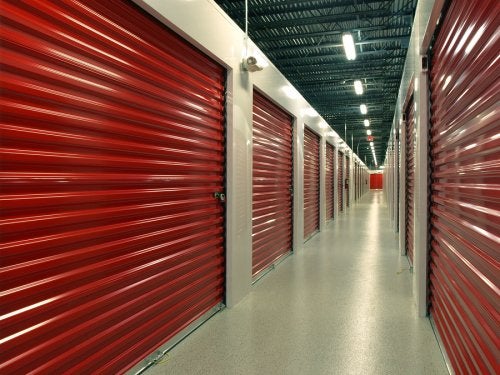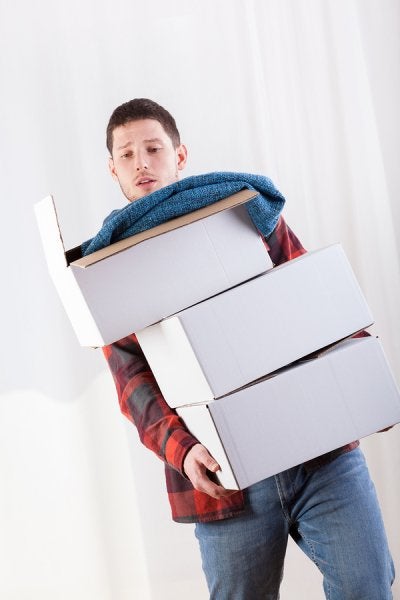-
The Best Move-in Checklist for Couples

Moving in together is a thrilling milestone in any relationship. It is the start of a new chapter filled with shared experiences, late-night talks—and debates over the correct way to load the dishwasher. To make this transition as smooth as possible, we have compiled this move-in checklist for couples. Use it to help you organize the logistics of the move and communicate openly with your partner about this big life change.
Move In Checklists for Couples to Focus:
-
Talk About Finances
- Money can be a touchy subject, but discussing finances upfront is crucial when moving in together. Start by creating a joint budget that outlines income, expenses, and saving goals. Decide how you will split expenses, whether that’s 50/50 or proportional to income. Then, set up a joint emergency fund as a safety net for unexpected expenses.
-
Decide Where to Live
-
Declutter
-
Plan the Big Move
-
Merge Your Styles
-
Divide Household Chores
-
Establish House Rules
-
Discuss Future Plans
-
Celebrate Your New Home
The goal is to find a space that feels like home for both of you. The first decision is whether you’ll move into one partner’s current residence or start fresh in a new place. Location matters, too—factor in commute times and proximity to family and friends. Also, discuss what you find important in a neighborhood, whether it’s walkability, safety, or nearby restaurants and parks.
Combining two households means double the stuff, which makes decluttering a must. Take inventory of what each of you owns especially large items like furniture and appliances. Do you really need two toasters or three sets of measuring cups? As you declutter, sort your belongings into three categories: keep, sell/donate, or store. If you have items you’re not ready to part with but don’t have space for, a storage unit is the perfect solution.
Moving day can be stressful, so plan ahead. Consider hiring packing and moving services to handle the heavy lifting, especially if you have a lot of furniture or fragile items. Pack strategically by labeling boxes clearly and grouping items by room. Do not forget to pack an essentials box with the necessities you’ll need right away, like toiletries, a change of clothes, and basic kitchen supplies.
Moving in together requires agreeing, or at least compromising, on home decor decisions. If one of you loves modern minimalism and the other prefers rustic cabin vibes, you have got some work to do. Discuss your preferences to see where your tastes overlap. Shop for furniture and decor together and bring home pieces that reflect both of you. If certain beloved items do not fit the new aesthetic, get creative—maybe that quirky chair can go in a reading nook instead of the living room.
Cleaning the bathroom isn’t glamorous, but someone has to do it. Before resentment builds over dirty dishes, create a chore plan that works for both of you. Some couples prefer a rotating schedule, while others divide tasks based on personal strengths. If you love cooking and your partner does not mind washing dishes, that’s a natural fit.
Every household runs on unspoken rules—why not talk about them to nip disagreements in the bud? Discuss guest policies, including how often you are comfortable having visitors over. If one of you is an early bird and the other is a night owl, set quiet hours to make sure you are both getting the rest you need. Also, be open about pet peeves. From leaving shoes by the door to never replacing the toilet paper, getting the little things out in the open prevents arguments later.
While it’s great to live in the moment, knowing what you each envision for the future ensures you’re on the same page. Talk about career aspirations and whether relocating for work could ever happen. If marriage, kids, or pets are in the cards, have those conversations sooner rather than later. Even if you’re just renting for now, discuss whether you see this as a short- or long-term living arrangement.
After all the planning, packing, and moving, take time to enjoy your new space together. Plan a fun date night or pop a bottle of champagne at home to celebrate the milestone. If you’re feeling social, throw a housewarming party to invite friends and family into your new home. Most importantly, make it your own—decorate, start traditions, and settle into this exciting chapter together.
How Independence Storage Can Help
With this move-in checklist for your new home in mind, you may be ready to rent a storage unit. Independence Storage has clean, secure self-storage units conveniently located in Mountain View, CA. All our units are at ground level with drive-up options for easy access. Plus, affordable rates and customizable billing provide the flexibility you need. Reserve a unit online or visit us today to see our facility in person.
-
-
5 Biggest Moving and Packing Mistakes

Moving to a new home is exciting, but it can also be a real headache. Between the endless to-do lists and last-minute packing chaos, things can spiral out of control fast. Knowing about a few common pitfalls can save you time and stress. Tackle the move yourself or hiring a packing and moving company.
Here are the five biggest mistakes to avoid:
1. Procrastinating on Packing
It is easy to put off packing. You think, “I will just do it the weekend before the move. How hard could it be?” But come moving day, you are knee-deep in a sea of random, unorganized belongings, kicking yourself for not starting sooner.
Here is how to avoid this packing blunder:
- Start early: Begin packing non-essential items at least three to four weeks in advance.
- Go room by room: Focus on one space at a time to avoid feeling overwhelmed.
- Set daily packing goals: Small tasks each day keep you on track without burning you out.
- Declutter as you go: Donate, sell, or toss items you no longer need. The fewer things you pack, the easier your move will be.
If packing still overwhelms you, consider using professional packing services for moving. Experts can box up your belongings quickly and efficiently, freeing up time to focus on other aspects of your move.
2. Skimping on Quality Packing Materials
You grab a stack of free boxes from the grocery store and some old tape from the junk drawer and call it good. What could go wrong? Plenty. Weak boxes can break under pressure, especially if sealed with a single layer of cheap tape. Plus, fragile items are more likely to break without proper padding.
For the best results, invest in good-quality packing materials. A little extra spending upfront can prevent costly damage later. Here’s what you’ll need:
- Sturdy boxes: Double-walled cardboard boxes hold up better.
- Heavy-duty packing tape: Don’t rely on weak tape that barely sticks. Use four individual lines of strong packing tape to seal your boxes properly.
- Cushioning materials: Bubble wrap, packing paper, and foam peanuts protect fragile items.
- Plastic wrap: This is great for securing dresser drawers, keeping furniture dust-free, and bundling loose items together.
For added convenience, many packing and moving services sell packing supplies. Be sure to ask when scheduling your move date.
3. Not Labeling Boxes Clearly
It’s a month before your move, and you’ve already started packing with high-quality boxes and tape. You’re doing great! Now, just make sure you label your boxes as you go. Otherwise, you’ll get to your new home with a mountain of identical-looking boxes to sift through.
Try these labeling tips:
- Write key details on each box: Instead of just “kitchen” or “bathroom,” write “Kitchen – Pots and Pans” or “Bathroom – Towels and Rugs.”
- Label three sides: Use a bold marker and write on multiple sides of the box.
- Mark your breakables: Clearly label fragile boxes so movers know to handle them with care.
- Use a color-coded system: For added efficiency, assign a color to each room and use matching stickers or markers. This prevents you from having to write the room name every time.
If you hire professionals to help with packing and moving, make sure box labeling is included as part of their package.
4. Overpacking Boxes
It’s tempting to cram as much as possible into each box to reduce the number of trips. However, an overloaded box can easily become too heavy to carry, increasing the risk of injury or the bottom breaking open mid-move.
To keep boxes at a manageable weight, remember these tips:
- Use small boxes for heavy items: Reserve small boxes for books, dishes, and canned goods.
- Stick to a 50-pound limit per box: If you can’t lift it comfortably, it’s too heavy.
- Distribute weight wisely: Place heavier items at the bottom of the box. If there’s still room, stuff lightweight towels or bedding on top.
If heavy lifting isn’t your thing, consider investing in packing and loading services for moving, so you don’t have to lift a finger.
5. Forgetting an Essentials Box
You arrive at your new home, happy but exhausted, only to realize your toothbrush, phone charger, and pajamas are somewhere in the mountain of boxes. That’s not exactly the smoothest way to start your first night.
The trick to avoiding this scenario is to pack an essentials box with everything you’ll need for the first 24 to 48 hours. Here’s what to include:
- Toiletries: Toothbrush, toothpaste, soap, and toilet paper
- Clothing: A change of clothes and pajamas
- Electronics: Phone charger, laptop, and power strip
- Kitchen basics: Snacks, paper plates, plastic cutlery, and water bottles
- Important documents: IDs, lease or mortgage papers, cash, and moving company contracts
Independence Storage Makes Moving Easier
Moving is complicated enough without worrying about where to store your stuff. Independence Storage simplifies the process with secure, convenient, and affordable self-storage solutions in Mountain View, CA. Whether you need short-term storage during your move or a long-term solution, we’re here to help. Contact us today to learn more about our self-storage services, or reserve your unit today.
-
Strategies for Safely Packing Your Fragile Mirrors & Artwork
Packing Tips from Independence Storage in Mountain View, CA
Packing up your belongings to move them into storage requires time and effort. Independence Storage wants to make sure you pack your fragile mirrors and artwork safely. We offer self-storage units that are safe and affordable in Mountain View, CA. Whether you’re in between homes or don’t have enough room to keep your belongings, our storage units are the perfect solution. Read on to learn more about how to pack your fragile mirrors and artwork so you can store them at our secure facility. Contact us if you have any questions or are ready to get started by selecting your storage unit.
Safe Strategies for Packing Mirrors & Artwork
Before you load up your storage unit, you’ll want to make sure that your fragile possessions are packed correctly. If you leave your mirrors and artwork in a precarious packing situation, they might become damaged during your move into a self-storage unit. There’s no need to be nervous as long as you choose quality boxes that are specifically designed for moving these objects. These boxes are generally tall and long with the aim of eliminating jostling inside, so the items are packed tightly together. You can pack several frames and mirrors in the same box as long as you’re careful.
Before you start working, have a large, flat surface to work on. Put packing paper in the bottom of the box you’ll be using. Place the object to be packed on the center of the table and wrap bubble wrap over the item and secure it with tape. Use two sheets of bubble wrap for particularly fragile items. Add wadded-up newspaper on the sides and top of the box to prevent any jostling. Close the ends of the box and apply a generous amount of tape. Mark the box as “pictures” or “mirrors” as well as “fragile.” Here are additional tips to ensure the safety of your fragile mirrors and artwork:
- 1. Purchase the right type of boxes. There are specially-made boxes sized for mirrors and artwork.
- 2. Make sure the bottom, sides, and top of each box have cushioning.
- 3. Wrap your mirror or artwork in bubble wrap or packing paper. Be sure that the packing material is safe to use with the artwork.
- 4. Label the box and mark it as fragile. Do not forget to add it to your storage unit inventory list.
- 5. Look for high-quality storage units that offer climate control. This can help protect stored artwork.
Packing Your Mirrors & Artwork for Storage
Your mirrors and artwork are extremely fragile. Before you put these items into storage, you’ll want to pack them the right way to keep them safe. There are boxes made specifically for large mirrors and artwork, but you’ll need to do some prep work to your items before you place them into those boxes. Be sure to wrap bubble wrap around your mirrors and artwork and then tape around the item to keep the bubble wrap in place. Line the bottom of your boxes with packing paper to create a cushion. Place your mirror or framed artwork inside your box and fill in space around the item with additional packing paper.
Why Should You Use Self-Storage?
There are many reasons that you may want to take advantage of self-storage to store your mirrors or artwork. Sometimes you have an old piece of art that you don’t have room to display, but you don’t want to get rid of it. Other times, you may be in-between homes. Either way, relocating these items to a secure storage facility is often your best option. You can access your items whenever you like, and you can rest easy knowing that they’re located in a safe, secure, and dry facility. You might not look forward to packing up your mirrors or artwork, but taking the time to do so correctly can prevent them from being damaged in the move. There are many things that can go wrong during a move, but planning ahead and taking the proper precautions will make the process smooth and help you get everything to your storage unit in one piece.
Choose Independence Storage for Your Fragile Items
Just as it’s essential to pack your mirrors and artwork properly, it’s equally important to choose the right self-storage facility. Renting a storage unit is a convenient and affordable solution to storing your belongings for the long- or short-term. When you’re looking for a storage unit in Mountain View, CA, look no further than Independence Storage. Each of our storage units is on the ground-level with ten-foot-high ceilings. We provide excellent security and customizable billing for all of our customers. Visit us to take a tour of our storage facility or contact us to reserve your storage unit today.
-
Learn the Dos and Don’ts of Helping Your Child Pack for College
 In college dorms, storage options are few and far between. If your child is going to a college far away and won’t be able to come home frequently to visit (and do laundry), then he or she will need to bring more stuff than the local college kids. Ahead of the move-in date, research options for student storage units in Mountain View. Renting a small, temporary storage unit for your child will minimize future frustration, as your child won’t have to ask you to mail out packages of his or her stuff every few weeks.
In college dorms, storage options are few and far between. If your child is going to a college far away and won’t be able to come home frequently to visit (and do laundry), then he or she will need to bring more stuff than the local college kids. Ahead of the move-in date, research options for student storage units in Mountain View. Renting a small, temporary storage unit for your child will minimize future frustration, as your child won’t have to ask you to mail out packages of his or her stuff every few weeks.Do limit your involvement in the packing process.
College is an exciting, giant step toward independence for your child. As tempting as it is to do everything for him or her, your child needs the opportunity to learn from mistakes. However, you can teach by example. Have your child call the appropriate office on campus to ask about rules regarding what can and can’t be taken to the residence halls. If your child has trouble with organization, sit down with him or her and develop a master list of things to pack . Sort the list into categories, such as clothing, bedding, personal care items, electronics, school supplies, and kitchen items.
Don’t hesitate to toss basic first aid items in a suitcase.
Even a well-organized teenager might not think to pack basic first aid items. Give your child the following items:
- Over-the-counter pain relievers/fever reducers
- Band-Aids
- Antibiotic ointment
- Hydrogen peroxide
- Cold pack
If your child takes prescription medications or uses an inhaler for asthma, he or she should have extras on hand. Make sure the closest pharmacy to the campus has your child’s prescriptions and health insurance information on file.
Do have your child get in touch with the roommate.
It isn’t necessary to furnish dorm rooms—they already have beds, dressers, and desks. However, there are a few larger items your child may want, such as a mini fridge, microwave, and TV. Have your child call the new roommate to find out if he or she was already planning on bringing these items. There won’t be enough space for duplicates. It’s common for campuses to connect students to rental services for mini fridges, many of which are combination units that also have an attached microwave. Your child and the roommate could rent a unit together.
-
Take Advantage of These Helpful Moving Hacks
Moving can become overwhelming quickly, but fortunately, there are hacks you can use to make your relocation just a little bit easier. Using temporary storage in Mountain View to get items out of your way is one thing you can do to take part of the stress out of moving. This video offers even more advice.
When a move is on the horizon, don’t wait until the last minute to get packing. Pack a little each day, and move packed boxes into your temporary storage unit as you go. Label all of your boxes, detailing exactly what is inside. This will help you find things easily in your storage unit and your new home. Don’t forget to pack a bag of essentials, so that you have easy access to a few changes of clothes and toiletries.
-
What Shouldn’t You Pack for Storage?
When you are organizing your belongings so that they can be placed in a temporary storage unit in Mountain View, it is important to make sure that you sort out items that should not be stored. While the vast majority of items will do great in a storage unit, there are certain materials and objects that may not be appropriate for placement in your storage unit facility.
Live animals should never be placed in storage under any circumstances. Additionally, hazardous chemicals or explosive items are also not appropriate for a storage shed rental. If you are planning on storing any food items, you may want to set aside any products that are perishable. When food is left in a storage unit, it will quickly go bad. Finally, toxic waste products, such as asbestos or lead paint, should be safely discarded instead of stored. A company offering storage rental options can answer your questions about the dos and don’ts of self storage.

-
Taking the Stress Out of Downsizing
Moving to a smaller home might seem like a stressful process, but with the right tools and resources, you can do it with minimal hassle. Keep reading to see how a little bit of planning and a self-storage unit rental in Mountain View can help you downsize with ease.

Think About What You Really Need
One of the hardest parts about downsizing is saying goodbye to items that you think you need. Take a mental inventory of your belongings to think about the items that you actually need and those that you merely want. Consider if you were to lose all of your belongings and think about which items you would replace immediately. This helps you determine the possessions that have real meaning and importance in your life.
Sell the Items You Do Not Need
If you want to give yourself the incentive to get rid of some of your belongings, you should plan a yard sale that allows you to make money for these items that you cannot take. When you can put a positive spin on purging some of your belongings, it makes it much easier to decide which items you really need. The extra money you earn from the sale can help you find space-appropriate items for your new home.
Consider the Size of Your Furniture
Before you hire a moving company to transport your belongings to your new home and your new self-storage unit in Mountain View, think about how well your furniture will fit into the new space. If you have a lot of big pieces, you might want to trade them out for smaller, multifunctional furniture that will work better with your new home.
Get a Storage Unit
Storage facilities provide a hugely valuable resource when you are trying to downsize. With a high-quality storage unit, you have a safe place to store the belongings that you want to keep without taking up valuable space in your new home. If you know that you will not have room for some of your most treasured belongings, you might want to look into storage units that make it much easier to downsize.
-
Declutter Your Space with Expert Storage Tips and Organization
When you are trying to clean out your home or office, it’s hard to decide what items to keep and which ones you can live without. Before you start loading up your storage unit rental near Mountain View , use the following tips to help you decide what to store and what to purge.

Use the One-Year Rule
As you start to go through your belongings, think about the last time you used each item. If you have not found the need for a particular item in more than a year, you can probably purge it. You can use this rule to help you decide whether to keep or toss anything from clothing and jewelry to sports equipment and electronics.
Think About Sentimental Value
Certain belongings hold a sentimental value that makes them more important than other items. If you can associate a sentimental value to certain items, you probably want to put them into the storage unit. If you like something but it does not hold a special place in your heart, you might want to purge it.
Look for Duplicates
If you find any duplicates of certain belongings as you start to browse through your closet, you might want to consider purging the extra one. If you can get rid of duplicates, it helps you clear out your belongings without having to sacrifice the items that you really want to keep.
Determine the Best Value
There might be some items that you do not use regularly but you find it difficult to consider parting with them. If you find yourself in this situation, try to determine if it is more valuable to you to keep them or to sell them and earn some extra money.
Get a Bigger Storage Unit
If you have gone through your belongings and purged everything that you can but still cannot fit everything into your storage unit, you might want to consider getting a bigger one. The Mountain View storage facility has plenty of unit sizes to make it easy to find the space to store all of your belongings.
-
Packing Your Mirrors and Artwork for Storage
Mirrors and artwork are extremely fragile. Before you put mirrors and artwork into storage, you need to pack them to keep them safe. Although they make boxes specifically for large mirrors and artwork, you will need to do some preparation to the items before putting them into the boxes. Wrap bubble wrap around the mirror or artwork and tape around the item to keep the wrap in place. Then line the bottom of the box with packing paper to create a cushion. Place the mirror or framed artwork inside the box and fill in the space around the item with more packing paper.
Visit your self-storage facility in Mountain View for boxes, packing paper, and other packing supplies. Your self-storage facility should also provide packing tips to help keep your belongings safe while they are in storage.
Mirror Mirror: Learn How to Pack Mirrors and Artwork
RECENT POSTS
categories
- Uncategorized
- Customer Reviews
- Infographic
- Convenient Storage
- Secure Storage
- Independence Storage
- Maximizing Storage Space
- Packing Tips
- Storage Unit
- Taping Boxes
- College Student Storage
- Packing
- Boat storage
- Self Storage
- Fragile Items
- Organize your space
- Organized Packing
- Purging
- storage facility
- self-storage unit
- Storage Rentals
- Professional storage services
- storage services
- Self Storage Insurance
- Holiday Party
- Studio Apartment
- Dorm Room
